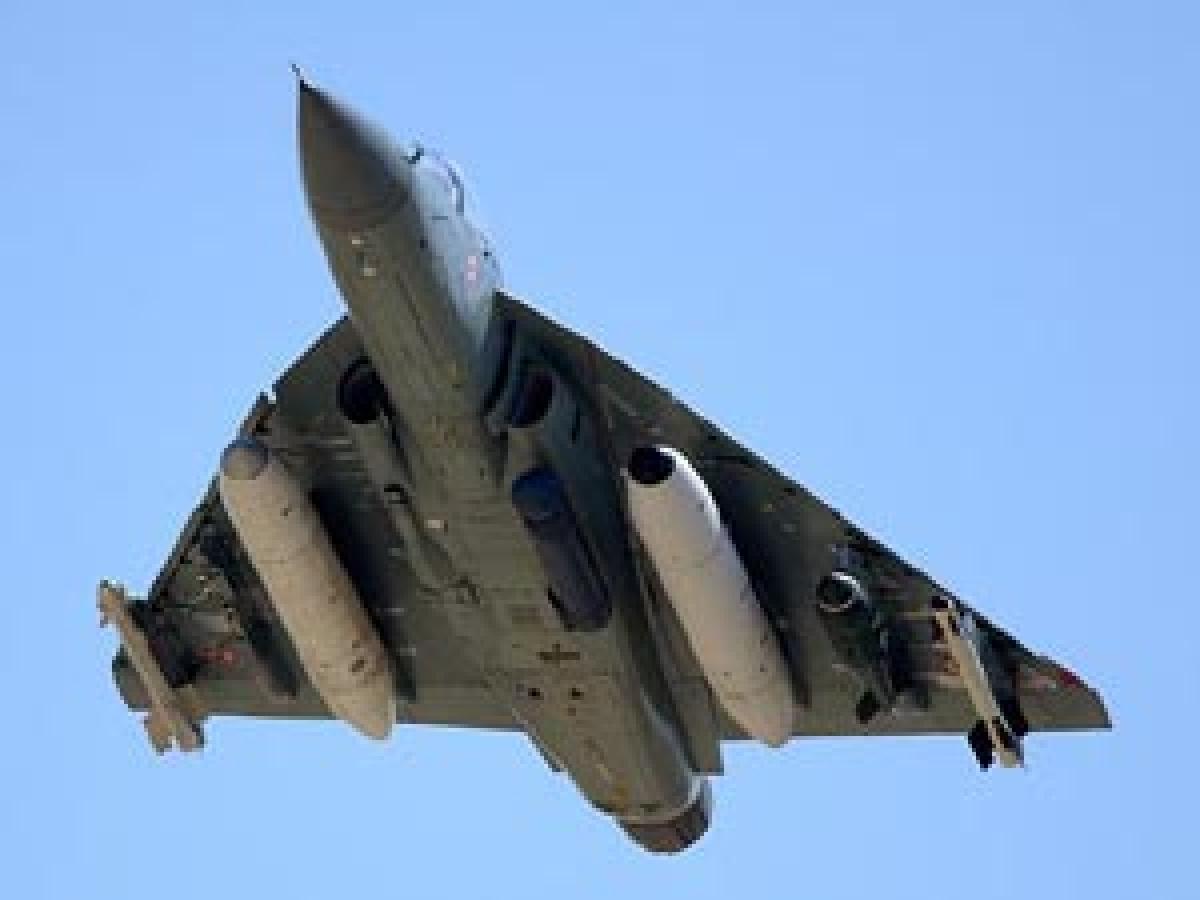Live
- Vijay Diwas: Assam Rifles organises Half Marathon in Tripura
- Delhi HC to hear on Monday plea against suppression of CAG reports by CM Atishi
- Collaboration, innovation, PPP key to achieve 2047 goals: Jitendra Singh
- Portraits of National Leaders to be Unveiled in Karnataka Assembly Hall
- Kejriwal's claims on vision for development ridiculous: Delhi BJP
- One nation, one election need of the hour: Mukhtar Abbas Naqvi
- Educational Trips in South Kanara Put on Hold Following Murudeshwar Drowning Incident
- Karnataka Temple Embraces Mechanical Elephant for Cruelty-Free Ceremonies
- Temple modelled after Ram Mandir to be constructed in US
- Property dealer shot dead in broad daylight in Ranchi
Just In

On July 1, 2016, No.45 Squadron of the Indian Air Force (IAF) became the proud recipient of India’s first indigenous 4th generation fighter; the Light Combat Aircraft (LCA) dubbed Tejas.
On July 1, 2016, No.45 Squadron of the Indian Air Force (IAF) became the proud recipient of India’s first indigenous 4th generation fighter; the Light Combat Aircraft (LCA) dubbed Tejas. This marks, not just an historic landmark for our aerospace industry, but a significant step forward in India’s quest for self-reliance in weapon systems and fits neatly into Prime Minister Narendra Modi’s ‘Make in India’ campaign.
Not more than a handful of countries can claim the competence to bring a project of such complexity to fruition. It would therefore be appropriate to acknowledge the achievement of our aircraft designers, scientists, production engineers and the flight-test team for having delivered a state-of-the art combat aircraft to the IAF - although belatedly.
It will be a few years before Hindustan Aeronautics Ltd (HAL) can deliver the squadron’s full outfit of aircraft, but the time would be gainfully employed to acquire flying experience and achieve the mandatory Final Operational Clearance for this sophisticated machine. The DRDO, India’s powerful defence research monolith, usually in the news for its shortcomings, deserves the nation’s compliments on this occasion. However, this is also a good juncture to draw lessons for the future, without yielding, either to euphoria or to negative skepticism.
The area in which the LCA project has attracted most criticism is the successive time and cost overruns that it experienced. The obvious cause of these was over-estimation, of its own competence, by the DRDO. This led to the ambitious claim that they had the capability to develop, not just the airframe and engine, but also the radar as well as a complex fly-by-wire (FBW) flight control system required for an ‘agile’ fighter.
This miscalculation was, perhaps, based on the premise that since India had earlier designed and built the HF-24 Marut, we possessed the design skills and manufacturing expertise. The Marut, putatively, India’s first indigenous fighter aircraft, had in actual fact been designed by a contracted German team led by Kurt Tank, designer of World War II fighters. Inducted into IAF in 1965, the Marut was only a qualified success; its advanced airframe being mismatched with a pair of under-powered Orpheus engines.
The assumption that the LCA would benefit from the expertise acquired from Marut project was fallacious because technology had moved far ahead in the three decades that elapsed. The most crippling impediment for the project was, however, posed by denial of crucial technologies by the West. Starting in 1974, after Pokhran I, America started shutting the technology tap for India. However, post-liberalization, finding a window of opportunity, advice and consultancy in certain key areas of the LCA design, notably the FBW system, was obtained from US and UK, but the post-Pokhran II sanctions brought this to an abrupt halt.
This is where our scientists showed their true mettle and went on to develop and qualify the complex flight control algorithms, almost entirely on their own. The sophisticated software for flight control, weapon-aiming, air-data and other computers carried by the Tejas as well as the carbon-fibre composite technology for its fuselage are the pride of our scientists. Apart from this, a large percentage of the fighter’s major systems have been developed by scientists working in dozens of DRDO laboratories, and produced by industrial units, right across the country.
The government must realise that the seeds of an aerospace ancillary industry have been planted, and will, hopefully, be nurtured by a long production run of the Tejas. Six decades after independence, 80-90 percent of our military hardware remains of foreign origin, and India has the dubious distinction of being amongst the top arms importers in the world.
The comprehensive capability to design and undertake serial-production of major weapon systems is an imperative that has, so far, eluded us. Not only is this a serious flaw in our national security, but our claims to major-power status will ring hollow as long as we remain dependent on imports for major weapon systems. (Admiral Arun Prakash is a former Indian Navy chief. A decorated fighter pilot, he oversaw the successful induction of the Sea Harrier into the Navy)
By Admiral (Retd) Arun Prakash

© 2024 Hyderabad Media House Limited/The Hans India. All rights reserved. Powered by hocalwire.com







